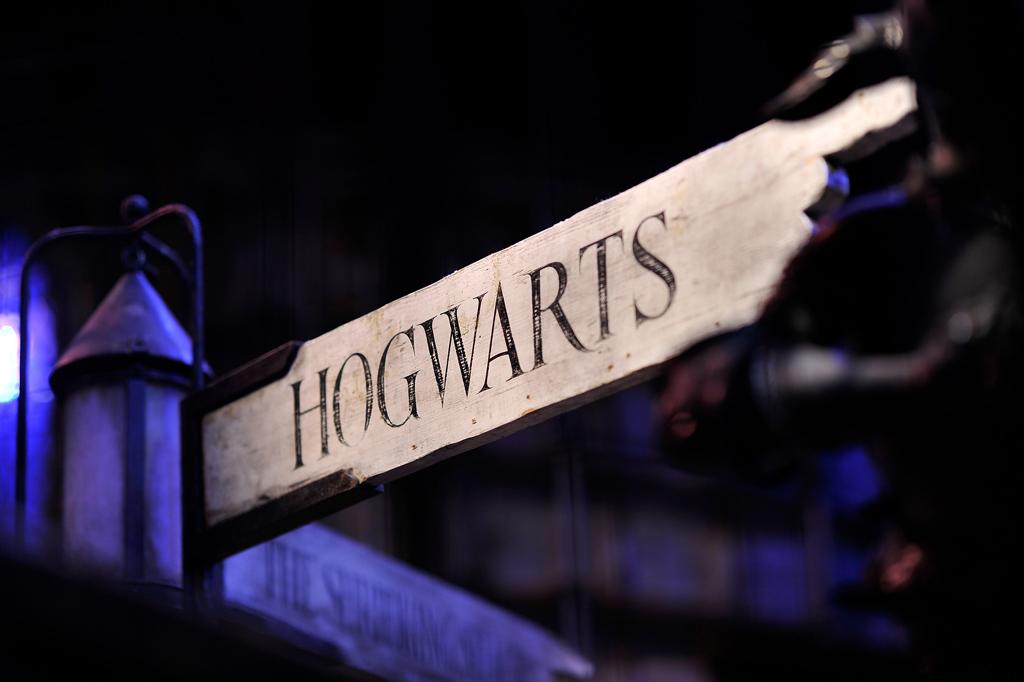A pilgrimage for Potter fans
The set of Harry Potter at the Warner Bros. Studio Tour London in Watford, England.
LONDON, UK — They come in costume every day to this soundstage on the outskirts of London: Dobbys and Hagrids and once, in a homemade cardboard contraption that made it impossible to sit down, a woman dressed as the Hogwarts Express train.
Since the sets of the Harry Potter films opened to the public in April, more than 1 million fans of J.K. Rowling’s wildly popular series about the boy wizard have descended upon the Warner Bros. Studio Tour in Leavesden, some 20 miles northwest of central London.
For a $44 entry ticket, Potter-inclined visitors can walk down Diagon Alley, photograph themselves on the Knight Bus and sample a glass of Butterbeer on the 200-acre campus on which the eight movies were filmed.
For a smaller and more devoted group of fans, however, the studio tour is less of a tourist attraction than a place of pilgrimage. To the series’ most diehard disciples — people for whom Harry Potter is not a book and film franchise, but a significant part of their identity — the sets are among the few tangible links to a world that exists only in fantasy.
For some, the effect is overwhelming. The tour’s “interactors” — stripe-shirted docents preternaturally well-versed in all things Potter — have witnessed all sorts of powerful reactions. People cry. A lot of people cry. One Australian woman was so overcome with emotion that she collapsed some 11 times.
The largely self-guided tour is designed to take three-and-a-half hours. The record visit length of nine hours is held by an English couple who had to be told to leave at closing time. The man dropped to his knees upon entering the Hogwarts dining hall. The woman fainted three separate times, though tour guides pointed out that she had a pre-existing heart condition.
“We’ve had people kissing the Great Hall floor. It’s mad,” said interactor Emily Parks. Many visitors proudly flash tattoos, Parks said: eyeglasses, lightning bolts, the skull-and-serpent symbol of villain Lord Voldemort known as the “Dark Mark.”
“A lot of people grew up with the books, and this is a part of who they are,” interactor Briony Scott said. The emotion, she said, “is them feeling like they’re a part of it.”
In the canon of franchises with devoted cult followings — Star Trek, Star Wars and the like — Harry Potter is unique in having a reliquary this exhaustive. Star Wars fans can’t, for example, walk around the set of the Mos Eisley cantina, which was filmed on a London soundstage and long ago dismantled. A Harry Potter devotee can, however, stand on the same York stone floor where Daniel Radcliffe tread and snap a dozen photographs of Maggie Smith’s McGonagall robe, as multiple visitors were gleefully doing on a recent Monday.
The movies were filmed between 2000 and 2010, which meant that sets had to be built to last, said studio spokeswoman Rachel Parsons. In addition, filmmakers didn’t know when they started production how Rowling was going to end the series, meaning that virtually every prop and set had to be kept on hand in case it made a significant reappearance in a later book.
For anyone with even a passing interest in Potter, it’s hard not to be charmed by the props on display. Werewolf Remus Lupin’s trunk unpacks itself with the touch of a button; the astoundingly detailed scale model of Hogwarts Castle used for exterior shots twinkles under the lights.
Fourteen years passed between publication of the first book and the premiere of the final movie — enough time for fans to grow up alongside Rowling’s characters. For many, Harry Potter is as evocative of childhood memories as a familiar smell or favorite photograph.
Victoria Hale, a marketing executive from Essex, cheerfully admits to getting “a little hyper, a little emotional” over Harry Potter. The 31-year-old has happy memories of reading the books with her parents and brother, and bonded with the friend who later became her husband over their shared love of Potter. The entire family visited the studio in November, an experience that gave Hale goosebumps and a lump in her throat.
More from GlobalPost: Harry Potter theme park to open in Osaka
“There’s something about the films that is magical,” she said. “The minute I hear that music I get chills up my spine.”
For committed fans, this sense of belonging has real emotional benefits. A 2011 study published in the journal Psychological Science found that readers who identified with Rowling’s fictional world got the same boost in mood and satisfaction that people got from associating with real-life social groups.
David Pearce, a university instructor from Kent, read the books with his four children, now aged 12 to 19. The family visited the sets in December. “I don’t want to be flippant, but it had almost this feel of a pilgrimage,” he said.
Though Pearce initially wondered if seeing behind the scenes would spoil the magic, his experience was just the opposite. “Just seeing how they did it and the amount of work that went into it just makes you appreciate it even more,” he said.
“That was the thing that really came out for me. This was a labor of love.”
Every day, reporters and producers at The World are hard at work bringing you human-centered news from across the globe. But we can’t do it without you. We need your support to ensure we can continue this work for another year.
Make a gift today, and you’ll help us unlock a matching gift of $67,000!
